Beginners Skoolie Guide: What's the best used bus for a school bus conversion?
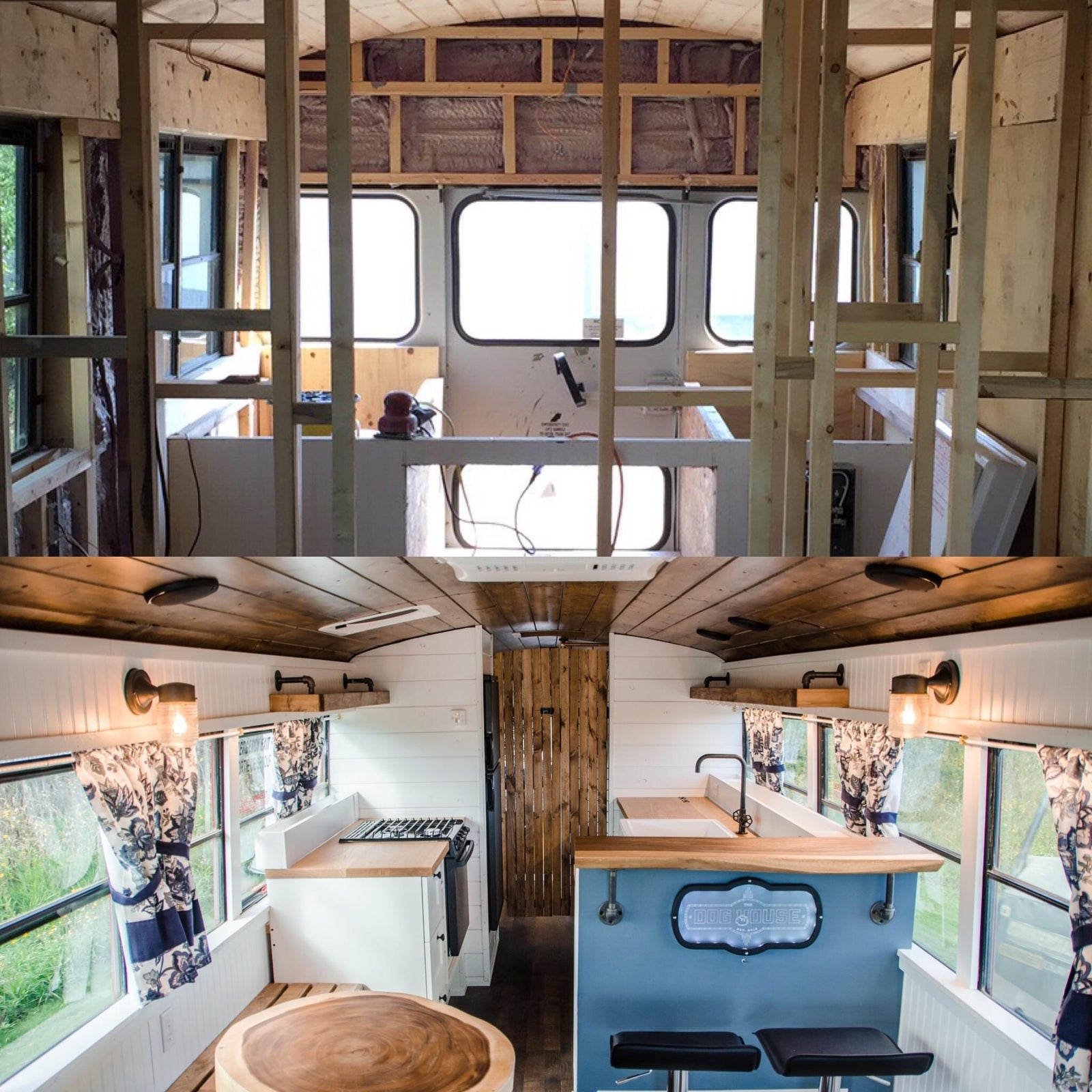
A question we get asked all the time is what's the best used bus to turn into a skoolie conversion? There are so many things to consider when buying a used school bus, or any used vehicle for that matter, especially when you want to convert it into your new off-grid tiny home on wheels. This guide will give you a step by step checklist on what to look for, who can help you, and what mistakes you could make, that can cost you THOUSANDS of dollars, if you don’t know the basics before you take the big step into building your own school bus conversion.
After converting over many different skoolies for ourselves and clients, we've learned a thing or three along the way and as our platform has grown, so has the occurrence of questions like:
- “What’s the best bus for a school bus conversion?”
- “What length of bus is the best for a skoolie conversion?”
- “What’s the best school bus engine?”
- “Where can I buy used school buses?”
- "What's the best layout options for skoolies?"
If there’s one thing we can warn you about when you’re buying a retired school bus it’s this:
Take your time and do the research, before you buy, so you don’t make any costly financial mistakes like buying a rusty bus with mechanical issues that turns into a money pit before you even start your conversion.
With that being said, welcome to the EXCITING start of your journey! You’re doing the right thing, research, research, research.
Below, we’ll provide you with the information necessary to make an educated decision about what to look for while finding what school bus you should buy for your own conversion.
You can also look at our free pre-purchase skoolie inspection checklist at the bottom!
As mentioned, reading the information below can potentially save you thousands of dollars in ‘hidden’ costs by helping you buy the right bus the first time around.
Climb aboard and let’s get this show on the road!
Want an easy way to design your skoolie layout?
Use the most DIY friendly layout design software, Vanspace 3D. It's super easy to build and design your own skoolie and van conversion layouts with an intuitive drag and drop software.
A back story on how we got here and why we're qualified to give you this advice:
Judy was the first bus we ever owned, converted, and [Steven] lived in. She was a 72 passenger Blue Bird International bus with a stick shift, hydraulic brakes and a long history. I can’t even remember the engine and transmission that were in the bus. In the beginning, this whole research thing didn’t even seem to cross our minds to compare all of the possible details we know now… We just jumped right in and did the due diligence we normally would when buying a used vehicle. We lucked out as Judy didn’t seem to need anything but a little TLC! That skoolies still on the road with a new family!
If you haven’t heard the story of how Paved To Pines came to be, in 2015 we traded a motorbike for this old 1991 bluebird school bus and ended up building Judy the skoolie over the course of 12 months. Steven lived the bus life for about a year until we moved cities and started the company. Now we're a full-scale van and school bus conversion company building over 10 customized conversions every year with our awesome team!
In saying that, and I don’t say this lightly, buying your school bus is the biggest step of your skoolie conversion journey! BUT this doesn’t have to be a bad or scary thing. We’re here to help you, in fact, you’ll be confident in searching for a bus and ready for adventure after reading this article.
Or If the thought of finding your bus is overwhelming, let alone converting it yourself, Paved To Pines is a full-scale conversion shop - we will help find the bus with you as well as find transportation to our shop, design your layout, build your entire skoolie, and ship it back to you! Contact us to get started.
 Our first skoolie, Judy
Our first skoolie, Judy
What are the different types of school buses you can convert?
This is a tricky road to go down. Everyone has their own opinions, experience, and ideas. This is the experience, research and information we’ve found over the years that Paved To Pines has been doing for our custom school bus conversions.
There are quite a few differences in the types of buses you can convert. Some of the differences are obvious when you look at the bus and some are more subtle that you won’t know about unless you’re told about them or know from experience. The biggest differences are going to be apparent when building different designs for your layout.
As seen below, the two main choices are a flat nose and a dog-nose bus.
Short buses only come in the conventional body style as they are generally truck cutoffs with a fibreglass addition. We won’t be covering anything on short buses in this blog but if you’d like us to write some more information on them, let us know in the comments.
Flat noses, or Transit style buses, only come in larger size buses.
The type of school bus you buy will directly affect your skoolie layout options.
Below, you’ll notice a few key things in green that are crucial for consideration while building your skoolie layout. The wheel wells are a big hindrance and a burden to take into consideration in the front & back of your bus.
The front-wheel wells are non-existent in a conventional skoolie conversion but you have less overall room for your conversion.
In the flat note buses, The front wheel wells are smack dab in your way but you do have an additional 4-5 feet of usable space in your skoolie.

Image credit: Buslandia
In our conversions, we usually put a couch over the passenger side wheel well and an entertainment area or additional seating above the driver side wheel well in most buses which is a great way to use space over the wheel wells. Plus, if you do this in a conventional bus, having no wheel wells will allow for even more storage space under the couches in the front.
Dog-nose VS Flat-nose
These buses are AKA: Conventional Buses/Type C vs Transit Buses/Type D

Let’s break this down a bit more because there is more to this than just layouts and looks. Even though your skoolie layout is probably the most important part of your conversion.

Pros:
- Bigger approach angle than the other two bus styles.
- Only dealing with two wheel-wells in the rear.
- Easily access your engine bay from the outside.
- Access to the rear for a garage under the bedroom area
Cons:
- Big departure angle.
- Very reduced interior square footage for usable conversion space.
- More likely to get rejected at some RV parks with the school bus look.
- Reduced visibility from the dog nose front.
Front Engine Flat-Nose & Rear Engine Flat-Nose Skoolies
There are a few different options when it comes to flat nose school buses. Some buses may have the engine in the front (FE) and some might have it in the rear (RE). When the engine is in the back of the bus, it’s called a pusher. These rear engine school buses generally have a bigger engine in them with more power and they’re only found in buses that are 35-40 feet long.
Both flat-nose style buses offer pros and cons for a skoolie conversion that not only affect your layout but drivability and other things like engine noise and heat while driving etc.
Front Engine Flat-Nose Skoolies

The flat nose front engine school bus is pretty much a mix of the pusher and the conventional bus having features from each. The biggest difference is that it has more usable floor plan space than a conventional bus.
Pros:
- More space for your floor plan/layout than a conventional skoolie of the same length
- Great visibility with the flat nose.
- Looks more like a Class A RV than a skoolie so you won’t get weird looks or turned away by some RV parks (yes this happens, sometimes even to flat nose buses).
- Door is right at the front of the bus optimizing layout space.
- Access to the rear for a garage under the bedroom area.
- Can add on aluminum storage boxes between the wheel wells for additional storage.
- Turning/handling is great with a shorter wheelbase.
Cons:
- Long departure angle similar to the conventional school buses.
- Worse approach angle than the conventional bus.
- Hot & loud while driving as the engine is right beside the driver.
- Engine bay inside the bus meaning that the interior can get a little messy when doing maintenance.
Rear Engine Transit Bus Skoolies

We saved the best bus, in our opinion, for last.
Diesel pusher school buses have become a very popular chassis to build a skoolie on for a few reasons.
Sometimes you can find these buses with a bigger engine (8.3L Cummins), they’re quieter, and you can build your bed around the engine bay at the back while still having some nice storage space while keeping the front of the bus wide open with no engine bay in the way.
Plus, a lot of these bus styles have through-bay underbelly compartments which is a beautiful thing for school bus conversions as it can house so much storage or systems. Oftentimes, we run a heat duct down into this underbelly area and keep some of our water systems and electrical systems there to open up space inside the bus and keep the gray tank in a more insulated area for 4-season use.
Pros:
- Can have a bigger engine (like the 8.3L Cummins).
- Quiet for driving.
- Underbelly garage/system storage.
- Great visibility with the flat nose.
- Looks more like a Class A RV than a skoolie so you won’t get weird looks or turned away by some RV parks (yes this happens, sometimes even to flat nose buses).
- As seen in the images, it has a better departure angle than the conventional and FE skoolies.
- Door is right at the front of the bus optimizing layout space.
- Engine is right at the back where your bed is anyways so it leaves more space at the front for the living space.
- Sometimes these buses come in a different style than a school bus and they have bigger, wider windows.
- Longer wheelbase/smoother ride.
- More space for your floor plan/layout than a conventional skoolie of the same length.
Cons:
- Engine at the back removes the rear door so you don’t have a rear garage option (but you do have underbelly storage).
- Lower ground clearance due to underbelly storage (you shouldn’t be going anywhere that this matter in a school bus anyways, these aren’t off-road rigs).
- 4 wheel wells to build around.
- Approach angle is worse than the conventional bus.
We like the transit-style bus for a few reasons: They have a higher GVWR (gross vehicle weight restriction), they offer excellent visibility, and they seem to be a favourite among most drivers who have driven these types of buses.
Conventional style buses, on the other hand, are cheaper (which is sometimes good), they are pretty easy to work on, more plentiful in most areas, and they seem to be pretty popular, even though a lot of districts are going with transit-styles. You could probably get either type of bus at a good price depending on the make, model, and model year.
Sidebar:
You might be asking yourself: ‘Can I just buy an older motorhome and renovate that instead of a school bus conversion?’
You can do anything you want! But it’s going to cost a lot more money to buy a motorhome that you’re just going to gut completely.
A school bus is a much more affordable base cost and you’re not paying for a bunch of crap you’re just gonna take out. I mean I guess you’re still sorta doing that in a school bus with the seats and whatnot. But you will pay less for a good bus than a good motorhome.
A school bus is also much much safer on the road. Seeing as they’re used to transport kids daily, they’re built to keep people safe. With the roll cage and steel structure all around, it’s not even comparable to the lightweight material they’re making traditional RVs out of.
One major positive about renovating an RV, instead of a school bus, is the slides it may have for additional space. Adding slides to a skoolie conversion can be done but takes a ton of skill and fabrication. So if you’re going to DIY the build, you better have mad skills. If you’re paying a builder to convert your skoolie, you better have some mad stacks. (Please don’t hate that I said mad stacks. I didn’t like it either but it just felt right). But really, adding slide-outs to a skoolie is extremely expensive/labour-intensive.
Want an easy way to design your skoolie layout?
Use the most DIY friendly layout design software, Vanspace 3D. It's super easy to build and design your own skoolie and van conversion layouts with an intuitive drag and drop software.
What size of school bus is the best for a conversion?
There are, what seems like, unlimited bus options with different engines, transitions, lengths and body styles. Below, I cover the main ones talked about in the forums and ones we've converted ourselves.
At the end of the day, picking the best size of school bus to convert is personal. On top of that, it's one of the best ways to travel in a safe way!
Below, we will give you a list of questions to ask yourself to help decide on the perfect size of bus for your own needs.
Short bus vs mid-size vs full-size buses.
How the heck can you tell the difference?
Think about it this way in total length bumper to bumper:
20-25 feet = short bus (find pics or graphics)
25-35 feet = mid-size
35-40 feet = full length
A good rule of thumb for what the interior, convertible/useable space is:
Bumper to bumper length minus 5 feet = interior space behind the drivers seat to the rear wall.
So a 40 foot bumper to bumper bus would have roughly 35 feet in length of convertible living space for you to work with.
Not exact but it gives a general idea to see if you’re in the ballpark. Of course, it's always a good idea to take a tape measure and get physical measurements of any bus you're looking to buy. But if you wanted to start playing with layouts prior, this is a good rule of thumb.
Something to keep in mind is - The longer your bus, the fewer places you can get it serviced mechanically.
Basically, if your skoolie is longer than 25 feet it's most likely not going to fit in a traditional mechanics garage so you’ll need a larger diesel shop to work on it. This isn’t a problem and shouldn’t scare you, though, as there are great diesel and truck shops in most cities.
We will talk more about engines and transmissions as well as maintenance later in this article.
Which leads us to this series of considerations.
Things to consider when buying a bus and building your skoolie layout.
It's been mentioned a few times already in this blog but we seriously recommend Vanspace 3D for all DIY folks to build their layout. Most people underestimate the intangible cost of not designing and preparing your layout before you start your build. It can cost you thousands in time and money.
Use the most DIY friendly layout design software, Vanspace 3D. It's super easy to build and design your own skoolie and van conversion layouts with an intuitive drag and drop software.
Your layout is also going to depend on your lifestyle. What you do on a day to day basis can drastically change what’s required for your available space and layout.
When you’re planning your skoolie layout, you need to make sure everything can be multi-functional.
Our first bus, Judy, was a 38 foot Bluebird. As Steven was living in it full-time, the additional space felt necessary to create a nice flow of functional living space. It’s important to think about what you NEED to feel comfortable when living this lifestyle.
Thinking critically about what you need will help you develop your layout, which I‘ll probably write another blog on if this would help you. Let me know in the comments!
How many things do you need and how much space do you require to be comfortable & happy?
This is probably the biggest consideration when choosing your skoolie size.Gandhi said it best:

Big space users in a skoolie are things like:
- Big kitchens.
- Showers & composting toilets.
- Full-size bed (queen, king, bunk beds, etc).
- Couches, dinettes, and additional seating options.
- Wood burning stoves (they need space around them for safety precaution).
- Washer/dryer.
- Ovens & multi-range stoves.
- Additional drawers or a closet.
- Entertainment areas.
- Any additional appliances like a bigger fridge.

Do you need all, or just some, of these things to live your daily life happily and exactly the way you want?
Do you need a workplace every day?
With working from home becoming a new norm and a goal for most people living the skoolie life, you'll most likely need a place to sit down to eat, work, and relax.
Two of our favourite things to add in custom builds are multi-functional couches and dinettes.
These two staple pieces can work as a workspace, storage and an additional sleeping spot.
If you're doing a DIY conversion, here's something to think about. When you build your layout and furniture always design it so things have multiple purposes. It's a crucial component to working with spaces like these tiny homes.
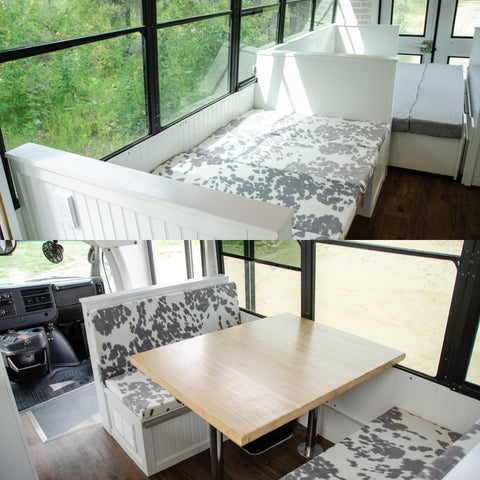
How much kitchen space do you need?
With limited space, you need to be utilizing upper and lower storage as well as walls to hold things like knives or spices in your skoolie kitchen.
Things like this will help you fit more things in less space and potentially reduce the need of your school buses size if you’d like.

Do you workout daily and use the gym shower?
Maybe you don’t need to take up space with a shower in your own bus. This would also mean you potentially don’t need to worry about additional tanks or plumbing runs, having additional plumbing means more things to insulate and heat.
If you don't need it, this is something that would save you space and money.
Pets, partners & travelling pals.
Do you have any pets with you and are they comfortable with a smaller space or are the two of you going to need a little extra room to run?
The same goes for partners! Do you both work from home? Are you going to need separate workspaces so you’re not side-by-side 24 hours a day?
How many additional seating and sleeping spaces do you require? Are you a solo traveller? Do you have kids? Are you with a partner and you need a co-pilot seat? That’s additional space needed where you need a bigger bus or to remove something or change your layout.

What do you do for entertainment?
If you're looking to keep your skoolie as small as possible, switch out the TV for an iPad or just use your laptop so you don’t need an entire entertainment system. Buy a kindle instead of getting an entire bookshelf. Things of that nature.
But if you're going with a bigger bus conversion, you can fit in an entertainment area set up for hosting any kind of rainy day.

How mobile do you need to be?
Is park-ability important? Or, are you very cautious about gas mileage?
Where you’ll be staying, parking, or if you’ll be driving much more than you’ll be parked are all things you’ll need to consider when choosing your skoolie size.
It goes without saying that the smaller the bus the easier you’ll be able to maneuver in tight spaces and find parking spots. Regardless of your skoolie size, you’ll get comfortable enough driving it around everywhere you need to go.
For the first few days, you might look like this groovy fella:
If you’re living around a major city that you need to commute into, find parking often, OR if your skoolie isn’t your permanent dwelling and you’ll need a storage spot for your bus, a shorter bus would probably benefit you more.
On the other hand, if you’re living in your skoolie in a more permanent location, you can find an affordable commuter car so you:
- Don’t need to move a big bus each time you need to go somewhere.
- Can have a bigger bus because you don’t need to worry about the above concern
- Spend way less money on gas mileage.
How much space do you need on your rooftop?
This is something that is often forgotten when thinking about layouts and there's a few ways to think about it.
This is important because everything takes up a lot of valuable space on your roof, leaving less space for other things. This can dictate what size of bus you'll need or where you place things within your build layout.
- How big of a solar system do you need? (IE what are you main power draws and how are you planning on charging you batteries) The more solar panels, the more room needed on the roof.
- Are you installing an A/C or multiple Maxxair Fans?
- Is a rooftop deck a must have?
- Do you plan on having additional storage or room for toys up top?
As you can imagine, each of these things will affect the placement of another. Just another thing to think about while planning your layout and design when thinking about bus size.
Want an easy way to design your skoolie layout?
Use the most DIY friendly layout design software, Vanspace 3D. It's super easy to build and design your own skoolie and van conversion layouts with an intuitive drag and drop software.
What kind of gas mileage does a school bus get?
This is a HUGE question and point of concern for a lot of people starting out. To be blunt, you’re not buying a school bus for their gas mileage. Like any large RV, they are gonna drink diesel. These units are sometimes over 30,000 lbs and 40 feet long. Take into account that some bus lifers are raising their roof increasing drag or adding on rooftop decks and other things of that nature.
Who said some math from school wouldn't come in handy?
If you are just looking to calculate your school buses fuel economy, we have a little help from the manufacturer.
Here’s an example of how to calculate the cost of your skoolies fuel economy from Thomas:
Step 1 - Determine your fuel economy:
- Divide the number of gallons used by the mileage obtained.
For example:
510 miles driven / 60 gallons used = 8.5 miles per gallon fuel economy.
Step 2 - Calculate total fuel costs.
- Take your total mileage and divide by your fuel economy. You can do this over a period of time, like a year, for example, to get a better idea of long term costs.
- Multiply the number of gallons needed per year by the total cost per gallon of fuel to get the approximate cost.
Thomas Built Buses Saf-T-Liner C2 Example
- 12,000 miles driven year / 8.5 miles per gallon = 1,410 gallon of fuel needed per year.
- 1,410 gallons x $3.07 per gallon* = $4,328.70
*national average in the USA on 3/6/19
Thats a lot of driving!
So how many MPG is YOUR skoolie going to get? This is a tough question to give an exact answer to because there isn’t one. It depends on many things like:
- The weight of your skoolie
- What kind of engine and transmission you have in your bus
- Gear ratio (most school buses are tuned for city driving but you can get this changed)
- Height and what you’ve added to your roof
On average, your school bus conversion will likely get anywhere from 7-10 MPG if it’s a diesel engine and you’re talking highway mileage.
If you have a short to mid-size school bus and you re-gear the bus to optimize for highway speeds/reduce the RPMs, you can see 10+ MPG (generally 10-12 is what we’ve seen and heard from our research).
Remember, you’re in a big RV, your gas mileage isn’t your main concern here. Even with a traditional 30-40 foot traditional motorhome, your fuel milage is still limited. The bonus about building a Skoolie is the added safety, customizability, and of course, affordability in comparison to traditional RVs.
Although fuel mileage shouldn't be your main concern, it still is something to think about.
Here are a few ways to get better fuel economy in your school bus conversion:
- Talk to your local mechanic about changing the gear ratio in your transmission to optimize for highway travel instead of inner-city travel.
- Remember it’s not a race, you don’t need to be flying around passing people pedal to the metal. The higher your RPMs and speed, the lower the MPG will be.
- Weight of your skoolie. If you’re going somewhere you know you can fill up at the destination, don’t fill your water tanks before you leave. It’s just adding unnecessary weight.
- Roof-raises, rooftop decks and other rooftop items. These are going to reduce aerodynamics. If you’re building a big deck or solar rack, think about putting a furring strip on the front to reduce drag.
- Make sure you’re buying a diesel-fuelled bus as it’s more efficient. You can see more on this from Thomas in this chart below:

“As you can see, even though clean-diesel costs more than gasoline per gallon, it outperforms other fuel types in operating range and overall costs, based on how efficient the fuel is.”
The bigger engines, like the new Detroit charter engines, are even more efficient on fuel.
There’s a multitude of factors that come into play with fuel economy and these are just some of them. If you have more that we’ve missed, let us know in the comments!
To wrap it up
As you can see, the bigger the skoolie the more room for activities but theres pros and cons to going bigger or smaller with your conversion.
You should see where I’m going with this. I do too, I might have to write an entire blog about layouts. Would this benefit you? Let me know in the comments below!
What's the best school bus engine & transmission?
Whether you’re looking around the skoolie forums doing research or on a marketplace looking for used buses for sale, you’re going to see several different engine and transmission options.
There are lots of opinions out there from people who’ve had good and bad experiences with every brand so we’re trying to keep this information as objective as possible.
The most common brand of skoolie engines you’re going to see are:
- Cummins (5.9L, 6.7L and 8.3L)
- DT (360 or 466)
- CAT C7
There are a few different types of smaller engines that are suitably in smaller short buses. There's quite a few different options for engines and transmissions in school buses in general so I will only be covering the main ones we see. BUT if this is something that would help you and you feel I should write, let me know in the comments below!
The most common transmission you’re going to see is an Alison automatic transmission.
School bus engine comparison:
|
International Navistar |
Cummins |
Caterpillar (CAT) |
|
|
Engine: |
MaxxForce DT (DT466) |
5.9L Cummins 24 valve (became the 6.7L in 2007) |
CAT C7 (Discontinued in 2009) |
|
Displacement: |
7.6L, 466 cubic inches |
5.9L 359 cubic inches |
7.2L |
|
Block: |
Cast iron, wet sleeve, inline 6 |
Cast iron |
Cast iron |
|
Compression Ratio: |
1-5-3-6-2-4 |
1-5-3-6-2-4 |
16:2:1 |
|
Horsepower: |
Up to 300 hp @ 2,200 rpm |
235 - 325 HP @ 2,900 rpm |
Up to 300 hp @ 2200 rpm |
|
Torque: |
Up to 860 lb-ft @ 1,300 rpm |
460 - 610 lb-ft @ 1,600 rpm |
Up to 925 lbs-ft torque @ 2000 rpm |
|
Injection: |
Direct injection • 1984 - 1995: Mechanical injection pump • 1994 - 2004: HEUI injection system • 2004 - present: Generation 2 HEUI injection system |
Direct injection • 1998 - 2002: Electronically controlled Bosch VP44 rotary injection pump • 2003 - 2007: Bosch high pressure common rail injection |
Direct injection HEUI injection system |
|
B50 Engine Life: |
550,000 miles |
350,000 miles |
450,000 miles |
Sources:Dieselhub (DT466),Cumminshub (5.9L),
Note: B10 is the average life expectancy of an engine measured in miles where 10% of the produced engines failed and needed a major overhaul. Consequently, B50 is the average miles where 50% of the engines failed. -capital reman exchange
Note: In newer buses, you’ll no longer see DT466 engines. In 2007, the name was retired and renamed the Maxxforce DT.
The 5.9L Cummins was retired in 2007 in favour of the emission friendly 6.7L Cummins

As seen in the Louvre 'Horsepower' - If this isn’t art, I don’t know what is.
School bus engine comparison continued
The International DT466 is used in many different applications, not just school buses, and has been manufactured for over 25 years. Its nickname, ‘The Legend’, was coined by users in the field before Navistar themselves started marketing it as such, this engine definitely earned itself a reputation. When the 300 & 400 series DT466 engines were introduced it was ‘the right engine and the right time’ in terms of technology and a solid base to grow on for years to come. That’s why this engine is still very popular and reputable today while still being widely used.
The Cummins 5.9L is one of the most common diesel engines on the market as well. One major thing you’ll want to keep an eye out for is the #53 Block engines as they have a tendency to crack which will cause you to have an expensive repair. With many available mechanics, aftermarket replacements and parts available, it’s an engine that you can have for a long time if you maintain it properly. School buses after 2009 will have the newer, environmentally friendlier option, 6.7L Cummins. You can see the specs on the 6.7L Cumminshere as it does have some changes like higher HP and Torque, for example.
Although the smaller CAT 3126 engines do have a less positive sentiment from buyers, the C7 & 3126 engine configurations are the same in most aspects. The C7 shares the same fuel system as the new DT466’s coined the ‘HEUI injector’. Unlike the DT466, the CAT C7 didn’t quite live up to the hype it was initially touted with when it was prematurely named the ‘golden child’. CAT stopped manufacturing the C7 in 2009 so as we move along in the years to come, parts might become harder to find. In saying this, we’ve converted and heard of plenty of skoolies with CAT engines that last a long time if properly maintained.
According to Diesel Hub, an engine with a wet cylinder sleeve design, like the DT466, allows for less downtime and reduced repair costs. This might mean nothing to you, as it does to me (I’m absolutely not a mechanic) but that sounds pretty spicy. This means that an engine overhaul can be done without removing the engine from the chassis. SOUNDS WAY CHEAPER! I like it.
All of these engines are well respected and highly used within the skoolie community. They function well when properly maintained and can be fixed and most reputable heavy-duty mechanic locations.
Like anything, they all have their pros and cons and good stories with their bad stories. At the end of the day, do your own due diligence and ensure you’re getting an inspection done and taking your skoolie for a test drive before purchasing anything. With proper due diligence and proper maintenance, your skoolie is going to have the best chance at staying on the road healthy for as long as possible!
Charter bus engine notes:
Detroit Engine (Coach Bus Conversions)
The Detroit Diesel 60 series engines are nicknamed the Million Mile Engines simply because their B50 rating (the one we talked about earlier) where 50% of the engines need an overhaul at this number, is 1,000,000. Another great thing about these engines is that they’re tuned and perfected already for highway and long-distance travel.
Some additional ‘pros’ with converting a charter bus into your ‘ skoolie, (would it still be called a skoolie? Charty? Charcuterie?), is that the ceilings are not rounded. This means that you can pretty much stand throughout the entire width of the bus if you’re under ~6’2.
Another awesome thing about these Charter conversions is the extraordinary amount of cargo space and room for systems there is on the chassis. These buses have so much room in the underbelly bays you could probably have another mini little man cave underneath one of them. Honestly, Frodo might be in there right now hitching a ride back to the shire.
Additionally, a lot of these coach buses are build out of materials that don’t rust. Some of the older MCI buses are stainless steel/aluminum and some of the Prevost buses are fibreglass. No rust issues!
Some cons that we’ve found out about, from our local heavy-duty mechanics, is that some places (probably in smaller cities) are no longer working on some of these bigger engines. It doesn’t mean they can’t fix them or take a look at them. But in our case, one of our local shops doesn’t have their diagnostic code readers for the Detroit engines anymore as it’s not a regular service request for their shop.
Additionally, you’re going to need a different license altogether vs just getting your air brakes endorsement for a traditional skoolie. These big bad rigs have dual axles and you’ll need to take another test to legally drive these things. Although we don’t really see this as being a deterrent as long as you feel comfortable driving a 45-foot long vehicle, the test is a non-issue.
How much can you buy a used school bus for?
A used bus can cost between $2,500 and $7,500 USD. Depending on the condition and spec of the bus they can be much more as a new bus can START at $50,000.
We recommend that our clients stick to buses that are starting at the $7,500 area as they have a better foundation to start an expensive bus conversion on. Most of our clients are living in their conversions full-time; their bus needs to last a very long time.
Some used buses, if they’re in great shape and have awesome specs can easily cross that $20,000-$25,000 range.
It comes down to a few personal decisions, like most things in this guide have. If you don’t mind getting your hands dirty, have no timeline, and are looking to do all of the labour yourself, a cheap $2,500 bus could turn into a nice new rig once all the cobwebs are figured out. Sometimes cheaper buses like this have a tonne of rust or mechanical issues, though.
If your plans are to put a lot of time, love, money, and effort into this bus to convert it into a bus suited for full-time living then it is most likely worth spending a little extra money on the chassis to have one that’s going to last a lot longer.
As always, you (usually) get what you pay for.
So spending a little extra on your foundation could save you a lot of headaches.
For example, we had this really nice new-looking bus come in but there was rust eating the underbelly bay alive. If you just touched it, the rust was so cancerous, the metal would crumble to the floor. We had to go under the bus, grind/removed the old 'metal' and fabricate a new frame. All in all, we got there before the rust became so bad it started moving to other areas. But it goes to show that even nice looking buses can have bad areas!

The bottom part of the photo used to be a steel square tubing structure. You can see in the top that it's just completely crumbled to the floor beneath the bus when we touch it.
Where can I buy a used school bus?
10 places to buy a cheap school bus for skoolie conversions:
- Check around your local school districts or city
- Craigslist or Kijiji (Canadas craigslist)
- Facebook Marketplace
- NWbus.com
- Tillerybus.com
- Lasvegasbussales.com
- Midwesttransit.com
- Mascus.com
- Skoolie.net - forums
- RV-Skoolie-Motorhome Buy/Sell/Trade - Facebook group
Contrary to popular posts and other people in the industry's recommendations, DO NOT buy a bus from an auction. You literally don’t know what you’re buying. Most of the time at an auction, you don’t get to take a peek at the bus you're bidding on. So you don't get to look underneath for rust, take it for a test drive, or do any of the other things we are going to tell you to check.
So… PLEASE save yourself the time, headache, and money and look for buses that aren’t being sold to the highest bidding sucker. You might be fine, but you also might buy a complete lemon and there's nothing you can do about it.
I’m not saying you won’t or can’t have issues with a private sale, you can have issues with brand new vehicles, but you have a better chance for success if you find a bus that isn’t at an auction. They’re usually sent to auctions because they can't sell anywhere else.
With the list of sites and places we’ve mentioned above, you’re more than capable of finding a good bus from somewhere that you can check out, inspect, and test drive prior to making this important decision.
If you are looking for a school bus conversion company to build your rig, you’re in the right place. Contact us as we can help procure a vehicle for you once a deposit is made if you do choose that you'll be converting with Paved To Pines!
Cost of skoolie maintenance.
You’re right, a big question of living in a school bus conversion full-time is ‘how much do these things cost to maintain?' Well, that answer is a little unclear and differs from vehicle to vehicle. Just like the cars you’ve owned, some older cars can go years without any issues and on the other hand, you could buy a new vehicle and it’s nothing but trouble. Some are just lemons.
First, when you’re going to buy or look at a bus, look online for that particular buses operation manual. You know, like the one you get with your car that tells you what all the maintenance times are and what the lights blinking at you mean.
Finding the school bus manual is a great way to stay on top of your skoolies mechanical maintenance and make sure that the bus is operating as it should.
There are some things you’ll find in your bus operating manual you might not even think about like horsepower, torque, RPM parameters, how often you should be changing your oil and air filter and more.
Routine School Bus Maintenance:
- Check your oil and air filters regularly.
- Replace your oil and air filters at the recommended intervals in use buses manuals. (generally 5,000-8,000 KMs)
- Check your power steering, coolant and transmission fluid levels
- Check your tires and tire walls as well as their pressure
- Check your belts to make sure they have no cracks or rips
- Ensure your hose clamps and all lines are tight
For an exhaustive skoolie maintenance list, gohere!
Some less common, annual skoolie maintenance, you’ll want to check on:
- Body line/roof seals and rivets to ensure none are rusting away on you. You can also paint over your roof with Henrys Rubberized Paint to give it a full seal.
- Skoolie window caulking and seals
- Paint chips or any other body damage that needs to be fixed to prevent rust or any further issues.

We painted this bus roof with Henrys Rubber Paint - you roll it on so it's not the easiest application as it's thicker than molasses, but it creates a rubber seal to prevent leaks and help with climate control! We will be writing another blog on how to paint a school bus soon enough.
Checklist for buying a used school bus for a skoolie:
Low mileage
150,000-200,000km is best. The lower the better, obviously. These big bad school bus diesel engines can last a very very long time if properly maintained. It goes without saying that maintenance(link to maintenance) is going to happen, just like any vehicle, but if you routinely take care of it your bus will last a long time.
If you can obtain the maintenance records from the place you’re buying your bus from, that’s even better. Most, if not all, school districts, activity buses, mining buses, coaches etc all require the work done to be logged meaning two things.
- The vehicle SHOULD have been properly maintained
- You can see detailed records of all the work that has been done so you know if theres have been major overhauls needing to be done etc.
It’s like a 23 & me DNA test for your bus.
No rust
This goes without saying. Rust is like cancer to any metal surface.
Not all rust is the same, though.
Surface rust can be treated with a grinder and some protection coating like rustoleum, rust check, or things of that nature before it gets sealed back up/painted. If you are having to treat surface rust on the floor of your bus, that’s common. These units are old and not sealed very well so moisture gets in under the floorboards. Treat any surface rust before you do anything else.
If you’re seeing major pitted rust in the undercarriage or side skirts, etc, it’s best to just move on and find another bus. There’s plenty out there.
While you’re underneath the chassis, inspecting the skoolie, check the U-joints and the axles. Really get under the bus and take a good look at everything prior to moving forward.
This is such a crucial part of buying your school bus, EVEN if it’s a screaming deal, you’re the only one who’s going to be screaming after you keep finding more and more rust and sinking more and more time and money into the conversion before you even get on the road.
Trust me, move on.
High roof so you can stand up (unless you'll be getting a roof raise)
Or if you wanna form a hunchback, the choice is yours.
Newer buses have a higher standing height which is around 6’5” down the middle. Some of the older buses, though, only have roughly 5’5” in height down the middle. SO if you’re 5’3” and up you’re not gonna be able to stand in a shorter height bus. You need to take into account the subfloor (we use ¾), your studs/insulation (1.5 inches) and then your roof thickness which can be ¾ if you’re using tongue and groove.
SO unless you’re doing a roof raise make sure you opt for the tall roof school bus for your skoolie conversion. Even then it might be uncomfortable in there to start with, make sure you’re getting a high roof bus.
NEVER buy your used school bus at an auction
Buses are being sent to auctions, mostly, because they can’t sell anywhere else. PLUS you’re buying something you can’t look at, drive, inspect, or ask questions about beforehand. All around a terrible idea and I haven’t heard of anyone buying a bus at an auction that worked out. So if it has for you, please comment below and tell us your story!
Check the engine bay
Even if you have no idea what you’re looking at, take a look at the engine bay and make sure there's no massive oil or antifreeze leaks or anything else that looks suspicious.
- Check the oil.
- Check the antifreeze and coolant levels.
- Check all of the hoses to make sure the clamps/hoses are in good shape.
- Check all of the belts.
- Check to see if you can find any other leaks/spills coming from anywhere 'under the hood.'
Check the transmission
During your skoolie test drive, don’t be blasting any ACDC or your favourite tune from beebs. Listen to the sounds the bus is making. Do you hear any ticks or grinding while shifting gears?
- Does the bus shift gears smoothly?
- If it's a standard transmission (where there's a stick shift), how does the clutch feel? Does it find the gear nicely?
- Put the bus in reverse on your test drive and move around in reverse to make sure it drives smoothly.
Don't just kick the tires
Don’t just ‘kick the tires’ as the old adage goes and think you can tell by the sound if the tires have a lot of life left. Check the walls of the tires for cracks or wear and tear. Make sure there's no bulges or patch jobs around the edges of the tire.
- Listen for leaks to make sure the seller didn't just fill-up the tire that had a slow leak before you came to check it out.
- Bus tires are expensive to replace so if it does need new tires, you can use this in your price negotiation.
- Check the tread on the tires to make sure there is a solid amount left.
- Your front tires need to have 4/32 tread in 3 different spots on the tire.
- Your back tires need 2/32 tread
Other notable things to check
- Batteries - make sure there is no corrosion. See if your bus tells you the battery voltage on the dashboard. It should be at 12.5 while the vehicle is turned and at 14v while the vehicle is running. (Higher and lower than these ranges is bad news. 15v is too high and 12v is too low).
- Watch the exhaust when you start it up and take it for a drive. If the bus has been running for a while and is warmed up but the exhaust is anything but transparent, that’s not a good sign and could lead to some expensive repairs.
- Make sure all the buttons/switches on the dash work. Fans, A/C, heat etc.
- Make sure the title is clean and there are no leans against the vehicle.
- The idling RPMs are within the range that your bus maintenance booklet states.
Always get your bus inspected before you buy it
This is a rule for ANY vehicle, not just your skoolie. Treat it like a home inspection, don’t be silly - ask too many questions. This rule ESPECIALLY rings true if you can’t physically see the bus. But you should always try and see it for a walk around and test drive.
This is a bare minimum and a must before buying anything. Find a reputable heavy-duty mechanic in the area and get the owner to drive the bus there for the appointment. If he is refusing to allow you to purchase pending it passes, he's most likely hiding something.
This, like the service report, is going to tell you a lot about the current condition of your skoolie and it could save you a LOT of headaches and extra cash down the road. Even coming down to the remainder of the tires life. New tires for a school bus aren’t cheap. Although, you could use it as a bargaining chip if the rest of the bus is in great condition.
The inspection isn’t going to catch absolutely everything, however, as the mechanics don’t drive the bus or check every single seal and hose etc. But they get the main components down, the lights, etc and it will save you a big headache.
Ask a lot of questions - Even if you think you sound stupid
I know this might sound silly but it never hurts to be reminded. Ask questions about the vehicle like:
- Why they’re selling the bus?
- How long have they had the bus?
- Do you have the maintenance records?
- Was the bus regularly maintained?
- Was the bus stored inside or outside?
- Has the bus had any major mechanical problems that have been fixed?
- Was the bus ever in any accidents?
- Have the engine and transmission ever had any issues? If so, are they replaced/rebuilt?
- Did they ever take it off any sweet jumps?
In conclusion...
- Do your own due diligence on the bus make, model, engine, transmission and size before deciding whether or not you want to go check the bus out.
- Once you check it out, go through the list we gave you above. You can also get our free checklist downloadable at the bottom of this page.
- If it passes everything on the checklist (or if most passes and there are minor things that need to be fixed), you can start your negotiation.
- Negotiate the sale price and get the bus inspected at a reputable heavy duty mechanic shop.
- Pending the school bus passes its inspection, you have just taken the first big step to convert a skoolie!
- Celebrate
Have questions about skoolies or van conversions?
Leave a comment below! Tell us how your journey of building your DIY skoolie is going. Or, if you think we're missing crucial information about buying a used school bus, let us know below.
Contact us if you're interested in having us build you your own custom school bus conversion. We work with clients from all over North America
Wanna learn more from us and get more free information on conversions? Check out our Youtube page!
Want an easy way to design your skoolie layout?
Use the most DIY friendly layout design software, Vanspace 3D. It's super easy to build and design your own skoolie and van conversion layouts with an intuitive drag and drop software.
Want more great advice & content delivered to you weekly?
Join our free weekly newsletter! You'll receive weekly video blogs with more actionable advice, tricks, and behind the scenes work that happens in our custom van conversion shop!





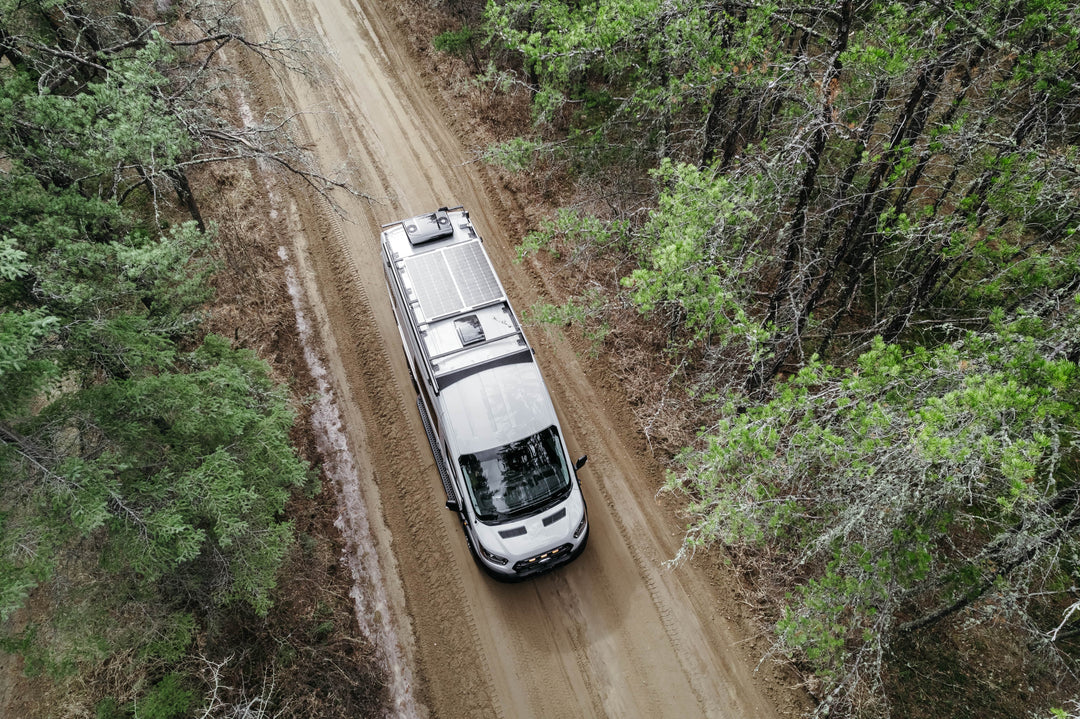

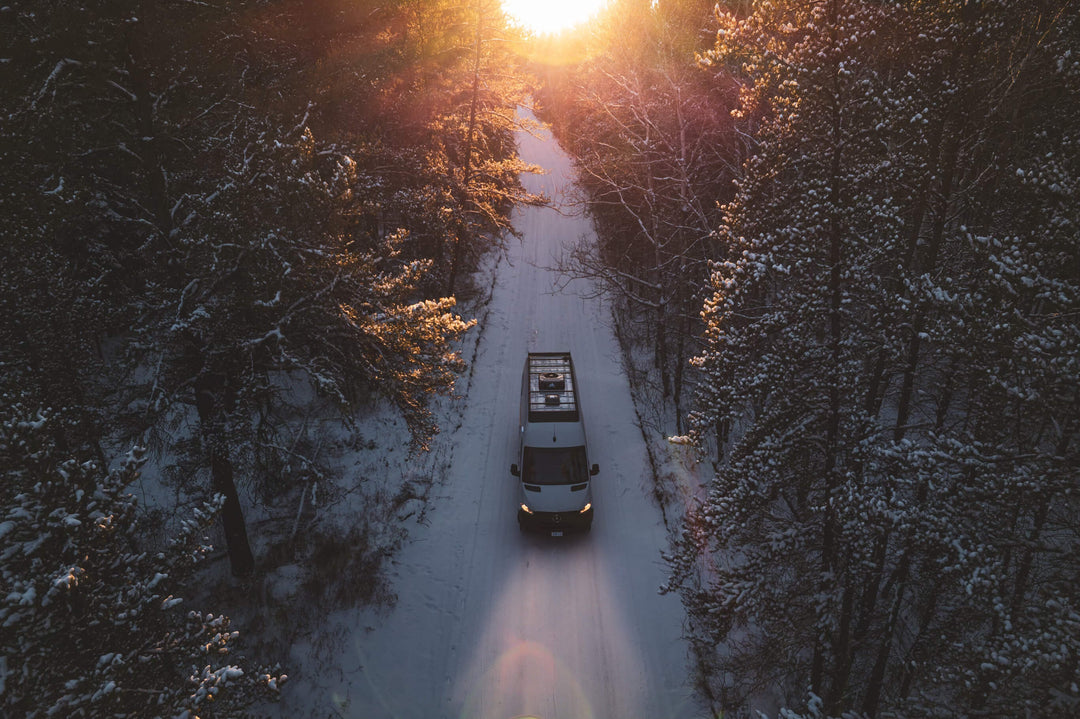

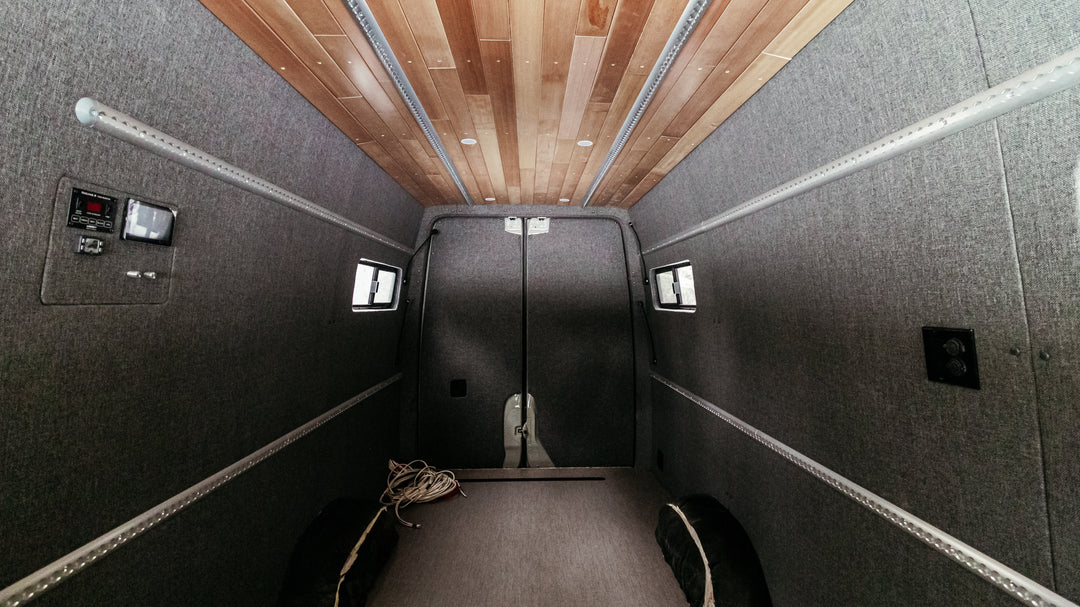
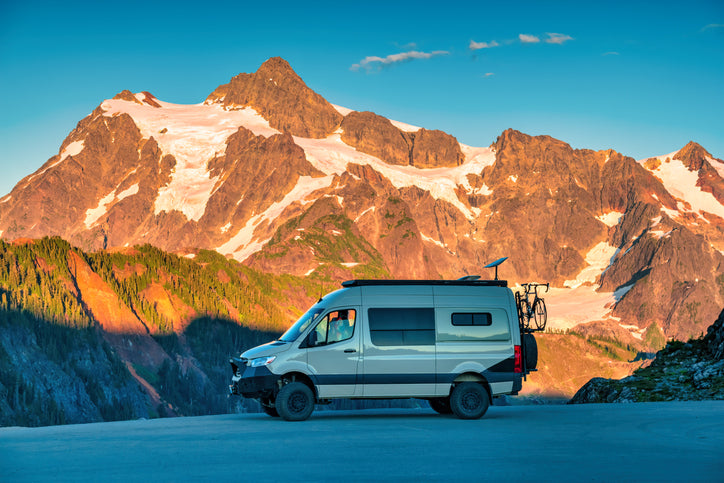
Any suggestions on how to find a good mechanic? I don’t have a lot of time before moving in and want to buy a converted skoolie. Just don’t know what model and want to see which are the easiest and cheapest to get work done on.
Fantastic guide for beginners! The detailed analysis of bus options for conversions is extremely helpful. Thanks for sharing these insights!
The best used bus for a school bus conversion is often the Thomas Saf-T-Liner HDX. It offers a robust frame, reliable engine, and ample interior space for customization. Other popular choices include the Blue Bird All American and the International RE-300, known for their durability and ease of maintenance.
Visit – https://gocoach.ca/
For beginners embarking on a skoolie conversion, the best used bus options include models like the Thomas Built, Blue Bird, or International. Look for buses with low mileage, good mechanical condition, and ample interior space to accommodate your conversion needs effectively.
Visit – https://gocoach.ca/
The best-used bus for a school bus conversion depends on various factors such as size, budget, and desired features. Popular options include Blue Bird, Thomas Built, and International buses. Consider factors like mileage, engine condition, and interior layout when choosing the ideal bus for your conversion project.
Visit – https://gocoach.ca/charter-bus-vs-other-transportation-options/
Leave a comment